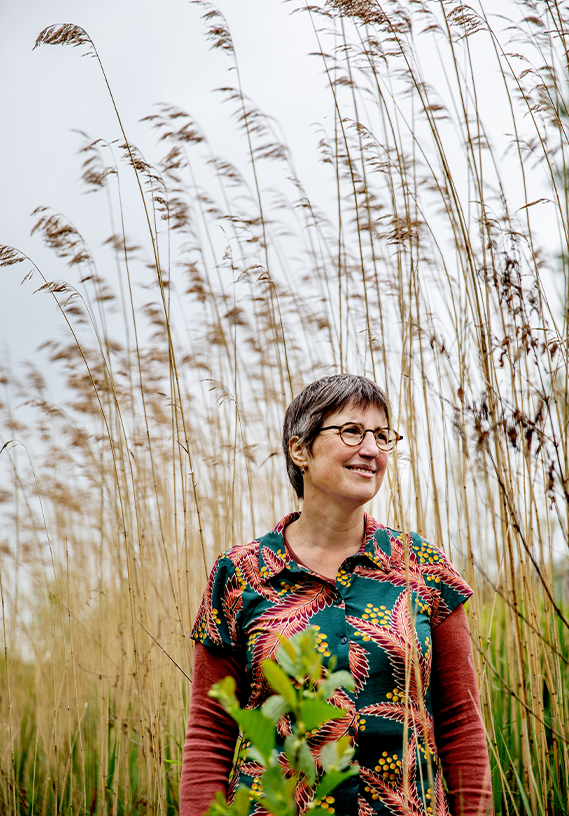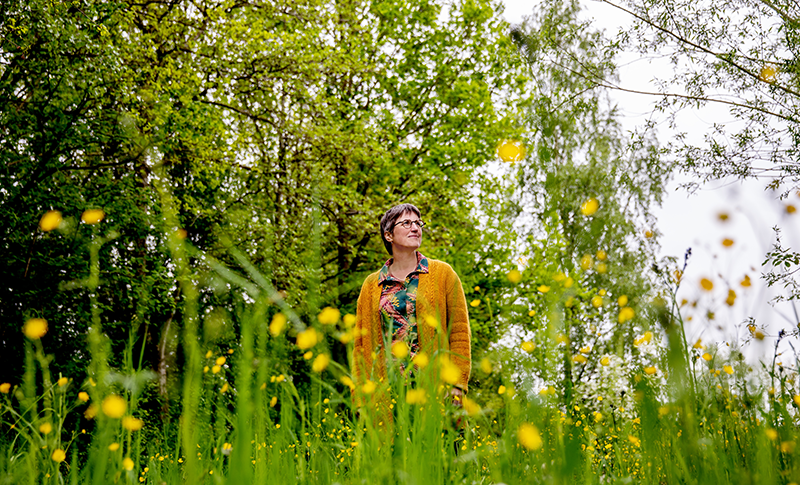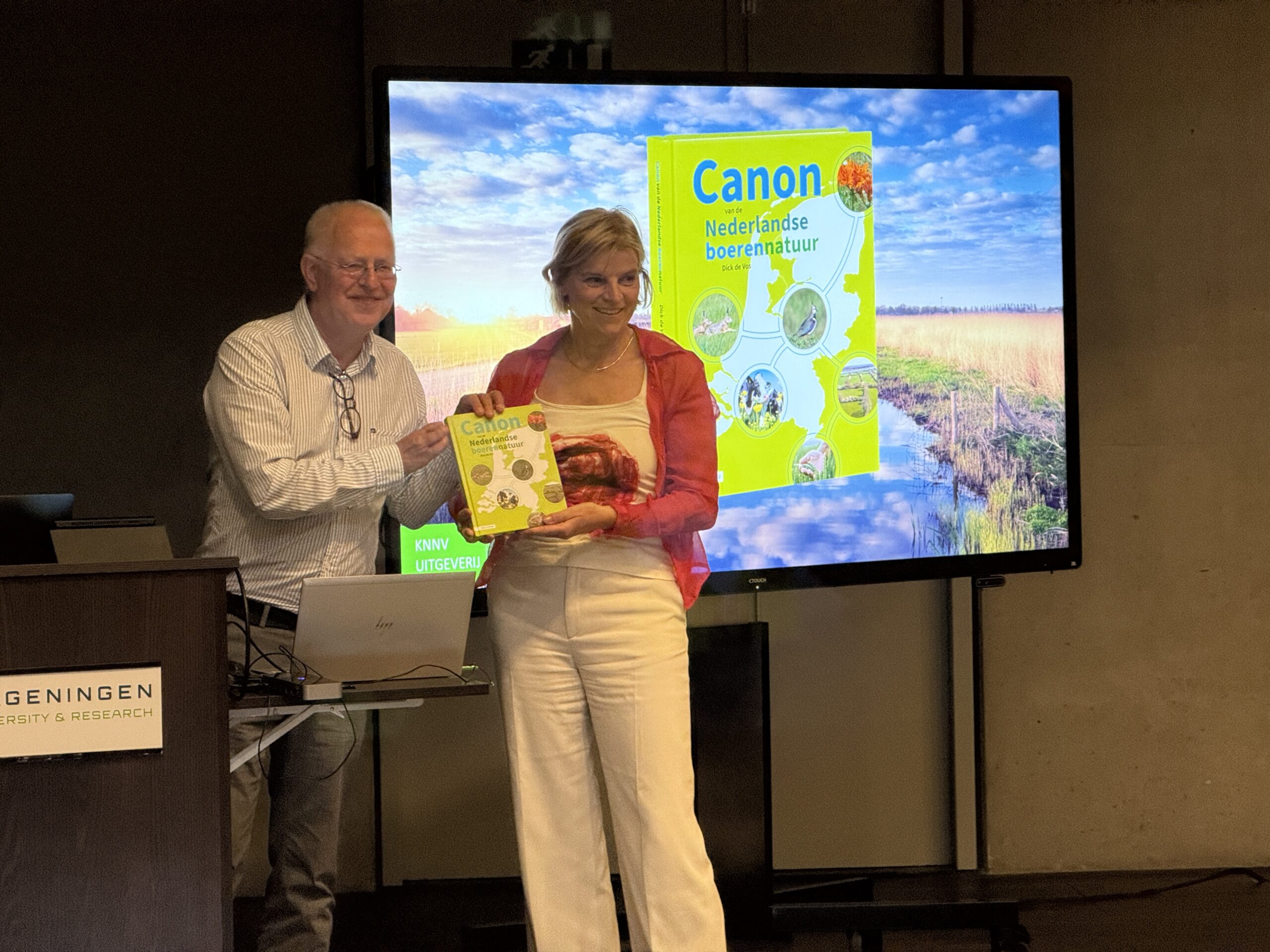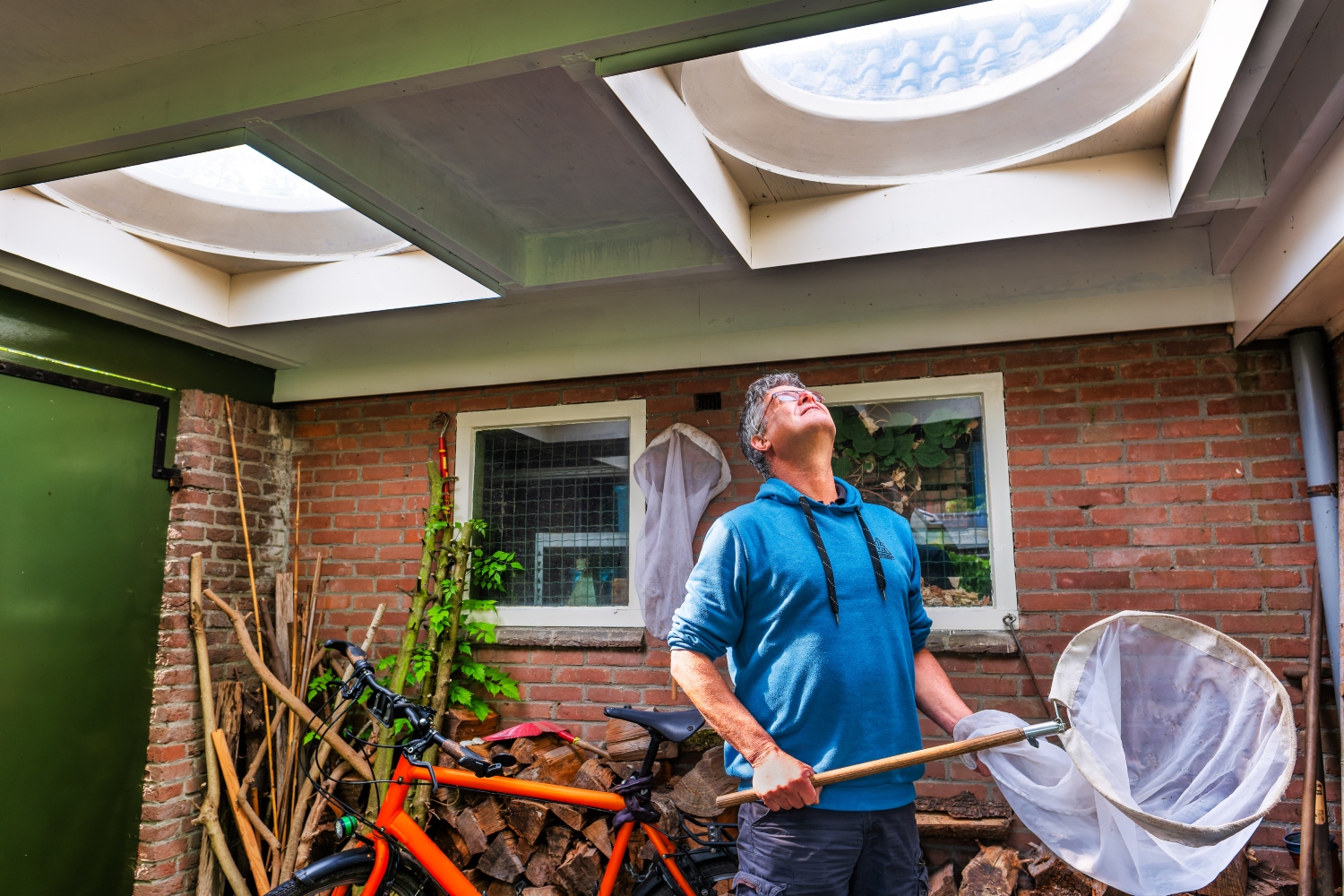Text Anne van Kessel
She is very worried about the decline in biodiversity, and yet Professor Liesje Mommer stays optimistic. ‘I have two children at home. If I give up, what are they supposed to do?’
‘Biodiversity is in a very poor state.’ Professor of Belowground Interactions Liesje Mommer gets straight to the point. ‘Biodiversity is about all life on our planet. It is the variation in all organisms; from microbes in the soil to blue whales in the sea. We need the entire ecosystem for our clean water, clean air, fertile soil and for food. In short, to stay alive. If the decline goes on like this, the planet will become uninhabitable,’ says Mommer, who also leads the Wageningen Biodiversity Initiative. ‘People are aware of the climate problem, but they don’t realize how bad the biodiversity situation is. And yet climate and biodiversity are two sides of the same coin.’
How are those two sides related?
‘The Amazon is a giant carbon sponge storing a substantial proportion of Earths carbon. Deforestation is now causing parts of the Amazon to release more carbon than it absorbs. Those emissions cause climate change. And climate change causes even more species to become extinct and soil to become less fertile. So we get into a negative spiral and the two sides reinforce each other.
I think our responsibilities as scientists are changing
But a positive spiral is possible too. If biodiversity flourishes, things get better climate-wise too. For this reason, the last UN summit on biodiversity in Montreal agreed on the “30 by 30” rule: by 2030, 30 per cent of nature on both land and sea should be protected, all around the world.’
Your own research focuses primarily on soil. What did you learn from that research for your work for the Biodiversity Initiative?
‘When I started as a postdoc, I wanted to work on something relevant. At the time, the first studies on the role of biodiversity in ecosystem functioning were starting. I wanted to do something related to that, something no one else was doing yet. Since everyone was studying life above ground, I decided to focus on the soil. I saw that plants function better in amongst a lot of different plant species. They are more productive, more carbon gets stored in the soil, and they are more resistant to disease. So I learned from plants that “you are better off together.” Lesson One.’
‘I also learned the importance of mycorrhizal fungi; these fungi provide plants with nutrients in exchange for sugars. There is a very large network in action underground. You can’t see it but it is vital to how plant communities function. Lesson Two.’
‘I apply both those principles now in the Biodiversity Initiative. We are stronger if we include the perspectives of all science groups. And the initiative is a bit like mycorrhizal fungi: it’s the connecting factor, the underground network.’
The idea of the Biodiversity Initiative was born three and a half years ago, when you read the IPBES report (Intergovernmental Platform for Biodiversity and Ecosystem Services) with its warning that a million species are in danger of disappearing as a result of human activity. Why did that report make such an impression on you?
‘I thought: Oh my God, I have two teenagers, what kind of world are they growing up in? I had two options: get depressed or do everything I could for a better world. My children had heard about the report on the children’s news on TV and my son said, “Mum, you work at the best university in the world. Do something!”’
How are you going to do that?
‘We’ve got to reverse the biodiversity loss. Now we are on a steep downward trend and we have to reverse that graph. That can be done through better nature conservation, and through sustainable food production and consumption. The latter two are uniquely strong points of Wageningen research.’
‘I want WUR to scrutinize every research project for whether it contributes to a nature-inclusive world. I would also like to see that every student who graduates from here knows about the biodiversity crisis and has an action plan for doing something about it.’
Did you care this much about nature as a child?
‘Yes. I come from South Limburg and we went out walking every weekend. I picked flowers and made myself a herbarium with them, and used a flora guide to identify them. I still love hiking. Whenever I’m out hiking I feel I’m a bit closer to Mother Earth, and I can recharge my batteries.’
What is it you feel then?
‘Peace. I enjoy the beauty: of the colours of the flowers, of a squirrel hopping around or a woodpecker pecking at a tree. Of sleeping under the stars in the mountains. It is comforting and I find it encouraging – as a human being and therefore in my work as well. Art has the same effect.’
What kind of art?
‘Mainly music. To me, a capella choral music is the most beautiful. I have singing lessons but I don’t sing in a choir. But singing together is one of the most healing things we can do as human beings. I used to play the flute in the village brass band, and I would sit there listening to the warm sounds of the horn behind me. That taught me that you can all play your own part, but the whole is much more beautiful than the separate parts.’
Did you inherit a love of nature from your family?
‘I don’t think so, really. My mother comes from a farming family. In the holidays we used to camp in one of my relatives’ meadows. I saw for myself how those farms kept getting bigger and more efficient.’
Was there ever any discussion about that?
‘There certainly was. And you take in all those discussions, sitting at the coffee table as an eight-year-old girl. Because of those experiences, I understand farmers’ concerns. They don’t mean any harm. They have done their best to do things right within the frameworks they had.
We should listen much better to young people; they often have unorthodox solutions
Now they are suddenly forced to change course radically, but it takes time to change. Some farms in my family have already made the transformation. One of them now has a food forest, for example.’
Do you now see yourself as a scientist or an activist?
‘That’s an interesting question. I am definitely still a scientist and I have my own line of research. I do think our responsibilities as scientists are changing.
Mum, you work at the best university in the world. Do something!
There is so much disinformation and lobbying from corporations. It’s our job to produce the facts, and to sketch and elucidate scenarios.’
Improving the world sounds quite activist.
‘The future of humanity is under threat. It is code red. But I won’t be gluing myself to a talk show table or a painting. My approach is different, I prefer to work underground. That sometimes produces the best results above ground.’
‘Indirectly, we are committing collective suicide,’ said Secretary-General António Guterres at the UN biodiversity summit in December. ‘This conference is our chance to stop this orgy of destruction.’
‘He is absolutely right. The fact that in the Netherlands we are now thinking about forest fires, and the possibility that Texel will disappear – that’s terrible, isn’t it? And we are just letting it happen. I don’t understand why our own politicians keep on procrastinating like this.’
How do you stay hopeful?
‘I have two children at home at the table. If I give up, what are they supposed to do?’
Are we going to meet that 30 by 30 commitment from the UN summit?
‘It is the minimum we must achieve to avoid a catastrophe.’
The Paris climate agreement talks about a maximum of 1.5 degrees of warming. The Netherlands is already well over that.
‘Yet I feel obliged to stay optimistic. The UN summit was in December. For me, those targets are the North Star in the sky. We must set our course by them. All we need now is three sages to guide us there.’
Who should those three sages be?
‘The European Commission has really good plans. Now it needs to stand firm and push the plans through the European Parliament. WUR can help by clarifying what we know and where more research is needed. For the third one, I would suggest a youth council – the new generation. We need to listen much better to their unorthodox solutions. To me, that’s where the hope lies.’
How will WUR make the switch to more sustainable agriculture?
‘There are brilliant projects underway. One example is CropMix, a consortium based in Wageningen. There are 30 farmers involved and they are in the lead. They ask the questions about the transition to sustainable agriculture, and we help find answers.
I don’t understand why our politicians keep stalling like this
Board President Sjoukje Heimovaara chose Planetary Boundaries as the theme of the academic year last year. There is a lively interest in the subject.’
When you said in the Dutch newspaper Trouw two years ago that Wageningen University was ready for a green revolution, the Executive Board wasn’t too happy about it.
‘That’s right. This kind of thing takes time and maybe I was going a bit faster than the rest. But we’re getting along fine now. The human race faces an immense challenge as a human race, but the green wind of change is in our favour at Wageningen and that will help.’

CV
2021-present
Head of Wageningen Biodiversity Initiative (WBI)
2015-present
Professor of Belowground Interactions, PEN and FEM, Wageningen University
2005-2015
Postdoc and associate professor, Wageningen University
2000-2005
PhD, Radboud University Nijmegen
1995-2000
Biology degree, Wageningen University
The period from 22 May to 1 July is all about biodiversity at WUR. Throughout the period, there are lectures and excursions organized by the Wageningen Biodiversity Initiative.
22 May was Biodiversity Day: on that day, WUR and 16 other universities launched a challenge to see which university can count the most species on campus in the period up to 1 July.
On 1 July, all residents of the Wageningen area are welcome on campus to listen to a variety of lectures and to learn all about the flora and fauna of an urban environment and about how to use wildlife cameras. Mommer: ‘If you don’t know what lives there, you can’t love it.’

 ‘I would like to see that every student who graduates from here knows about the biodiversity crisis and has an action plan for doing something about it.’ Photo Duncan de Fey
‘I would like to see that every student who graduates from here knows about the biodiversity crisis and has an action plan for doing something about it.’ Photo Duncan de Fey 

![[Seriously?] Something fishy about BioBlitz](https://www.resource-online.nl/app/uploads/2025/05/WEB_DeNeusUK.png)